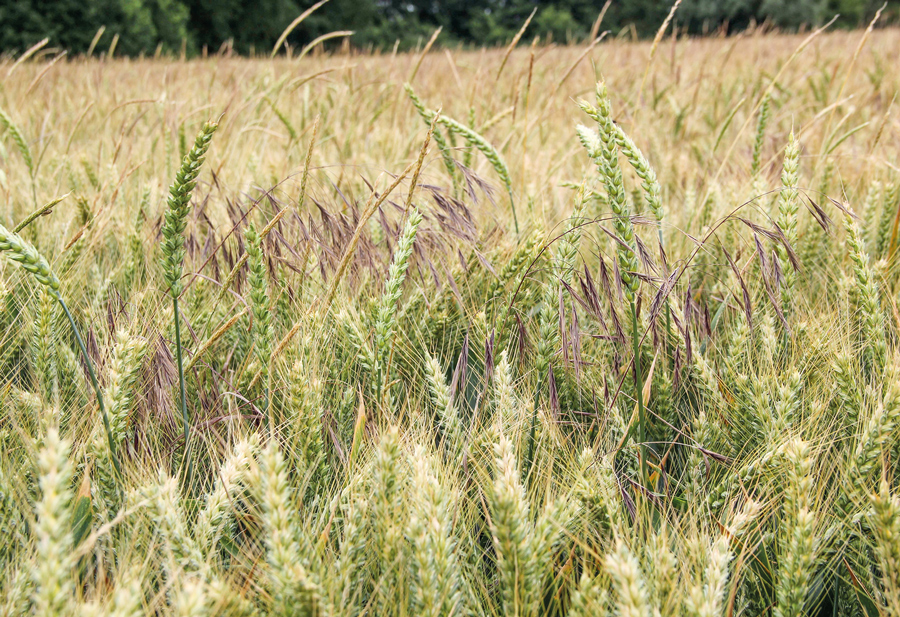Grassweed Action : Battling against bromes
31st May 2019
Bromes are the next national grass weed threat to come under Barrie Hunt’s integrated management spotlight in the fourth in our series of articles.
Bromes are the next national grass weed threat to come under Barrie Hunt’s integrated management spotlight in the fourth in our series of articles.
Like Italian ryegrass, brome problems have grown faster than black-grass for many in recent years. Especially so in the southern, western and northern parts of the country where a net third of growers reported an increase in infestations, according to a recent national study.
As the plough was the weapon of choice in dealing with the weed in the past, it’s hardly surprising the growth in the area of cereals infested by brome has paralleled the progressive reduction in tillage. Nor, that with ever-wider working cultivators and combines initial headland infestations appear to be spreading across fields more rapidly these days.
Like Italian ryegrass too, bromes tend to be more competitive than black-grass, with wheat yield losses of over 5 per cent typically being seen from populations of just five plants/m2.
Thankfully, no herbicide resistance has yet been found in the UK. However, bromes resistant to ACCase and ALS inhibitors have been detected in both France and Germany. And last season the first UK populations with a reduced sensitivity to glyphosate were reported, underlining the importance of both integrated control and glyphosate stewardship.
Diversity
While bromes can emerge from a much greater depth of burial than most annual grass weeds, our real challenge in managing them lies in their diversity. In particular, the five separate species we commonly find as arable weeds – sterile or barren, great, soft, meadow and rye brome – differ noticeably in their germination patterns and sensitivity to post-em herbicides. So the first key to getting on top of them is to correctly identify which species we have.
This is only really possible in the summer from their different seed heads, and even then we need to examine them carefully to tell them apart. Keeping a close eye out for bromes over the summer is important too because they can appear without warning in almost any ground and we ignore the smallest infestations at our peril.
For the best cultural control, the most important thing we have to do is to tell the two main brome families apart. Where barren or great brome are the main issues we need to shallow cultivate the ground immediately after harvest to encourage rapid germination for pre-planting control with glyphosate. This is because exposing the seed to light induces dormancy and the likelihood of germination within the crop.
In complete contrast, we need to leave the seeds of meadow, rye and soft bromes on the surface for around a month to fully ripen before cultivation and application of pre-planting Roundup, as burial promotes their dormancy, seed survival and later emergence.
Ploughing
Alternatively, of course, ploughing – either across the whole field or the headlands alone where infestations are confined to them – can be very effective for all five species.
We have to plough with sufficient care to ensure we bury all the seed to a good 15cm depth. However, being much shorter-lived than either black-grass or Italian ryegrass seed, future ploughing carries far less risk of bringing viable seed back to the surface.
First class machinery hygiene is important to avoid importing brome seeds into fields or spreading them from initial headland patches. Wherever possible, we should always harvest and cultivate infested areas of fields last and thoroughly clean machinery before moving fields. We shouldn’t farm-save cereal seed from infested areas either, or chop and spread or use straw for livestock bedding.
As with our other grass weeds, we need to integrate our cultural controls carefully with the best combination of pre-planting and pre- and post-em herbicide treatments. No effective post-em brome control products for winter and spring barleys make pre-planting and pre-em sprays especially important here. And particularly robust wheat post-em programmes are vital with great brome.
At the same time, we need to bear down hard on bromes across the rotation, both winter OSR and beans offering good in-crop control opportunities and spring cropping giving the greatest leeway for pre-planting glyphosate, either in stubbles or with cover crops sprayed-off effectively ahead of drilling.
As Roundup technical manager, Barrie Hunt co-ordinates the national on-line resource (www.monsanto-ag.co.uk/grassweed-action) providing the best information and guidance for growers keen to control grass weeds in the most sustainable way possible.

